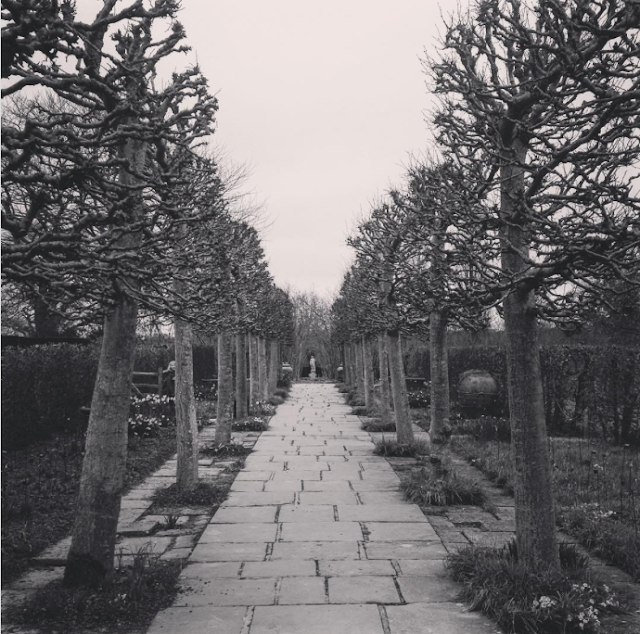And speaking of walking in gardens (as we almost were), there’s a 1927 love letter from Virginia Woolf to Vita Sackville-West, that some sources will tell you is one of the great love letters of our time.
In that letter Woolf writes,‘Look here Vita — throw over your man, and we’ll go to Hampton Court and dine on the river together and walk in the garden in the moonlight and come home late and have a bottle of wine and get tipsy, and I’ll tell you all the things I have in my head, millions, myriads — They won’t stir by day, only by dark on the river. Think of that. Throw over your man, I say, and come.’
I’ve always had found this a bit confusing. When she says ‘dine on the river,’ does she mean that they should actually eat in Hampton Court Palace and then walk in the garden? And does that mean Hampton Court was open at night for dining and walking? It currently closes at 5.30, with last admission at 4.30 but no doubt it was different in those days. Or maybe the whole thing was a literary conceit.
We all know that Virginia was something of a walker, Vita perhaps less so, though there’s a radio talk she gave in 1950 titled ‘Walking Through Leaves.’ She explained that the title referred to ‘the small but intense pleasure of walking through dry leaves and kicking them up as you go, they rustle, they brustle, they crackle – and if you crunch beech nuts underfoot at the same time then so much the better”.
Ah, the nuts …
Of course we know that Vita did not throw over her man – Harold Nicolson, and he was not easily thrown. She did briefly leave him for Violet Trefusis but he was having none of that: he pursued her and brought her back home.
That was in 1920, six years before she met Virginia. In 1930 Vita and Harold moved into Sissinghurst where Vita became famous for her gardening, if rather less so for her novels and poetry. Interestingly (perhaps) there is a series of ‘walks’ within the garden: the Lime Walk, the Moat Walk and especially the Nut Walk.
In April 1930, Harold wrote in his diary about the moment he and Vita made up their minds about Sissinghurst: 'We came suddenly upon the nutwalk and that settled it.'
This is Harold’s Nut Walk at Sissinghurst.






















